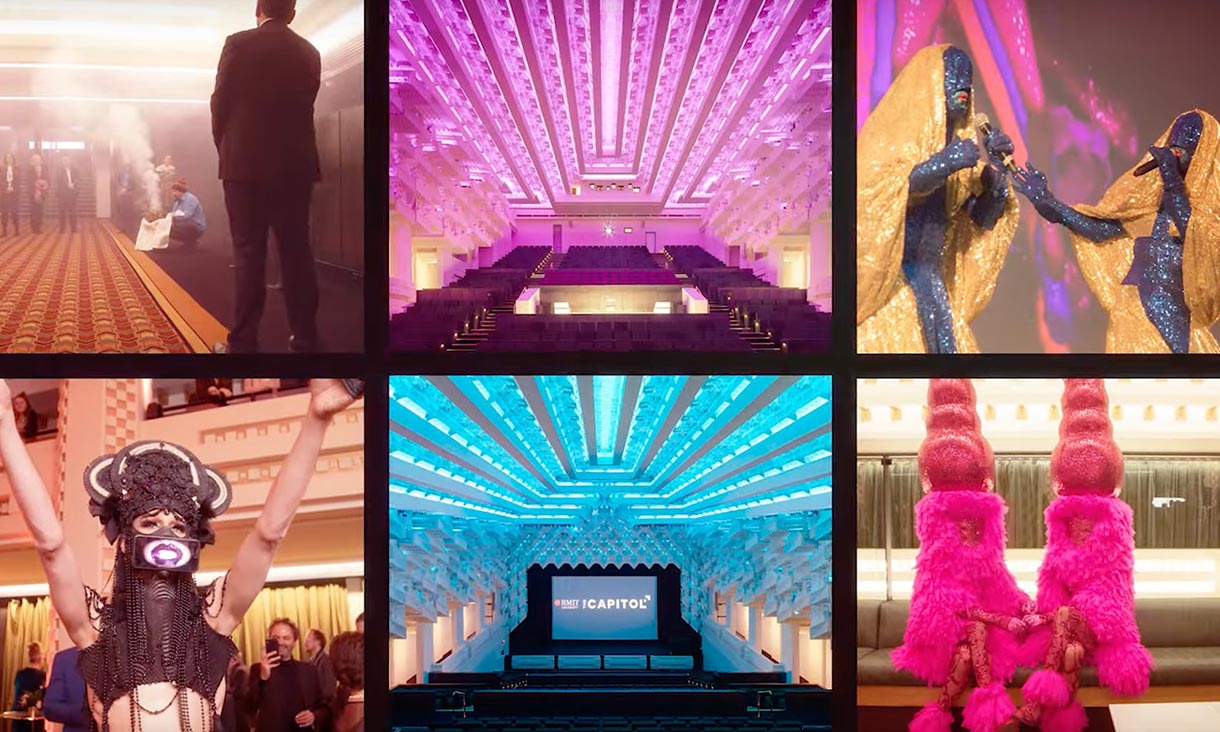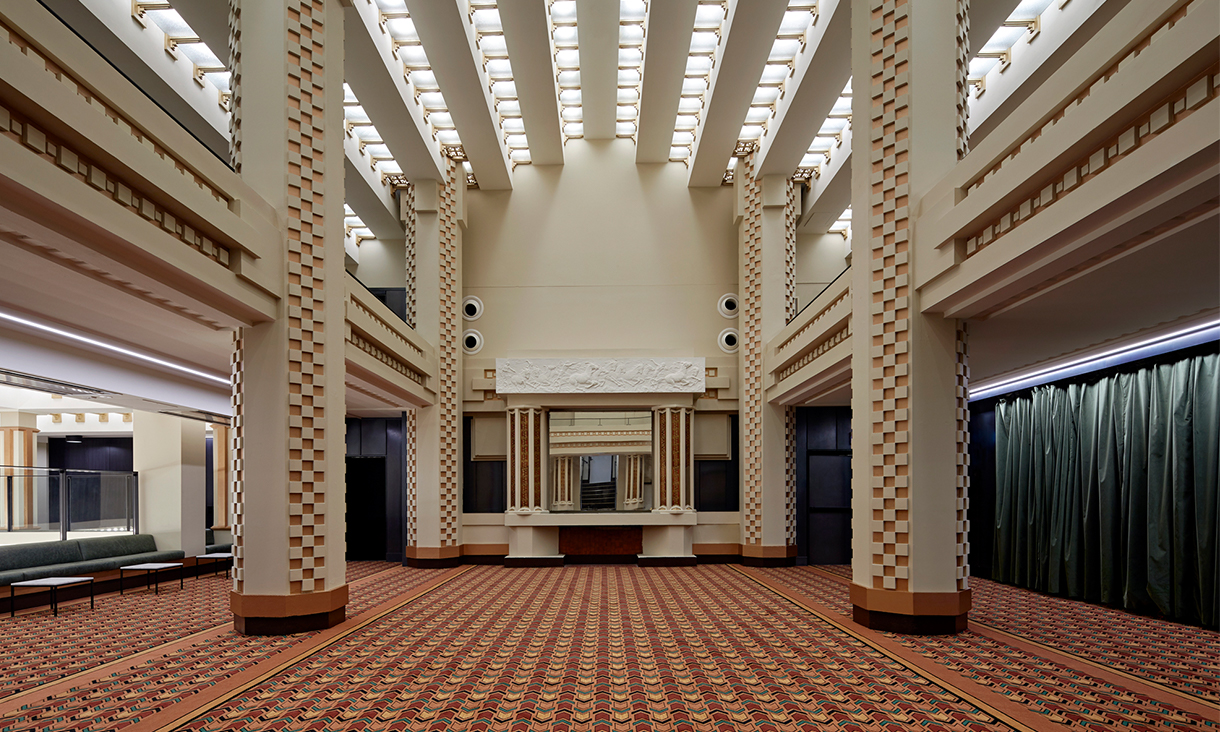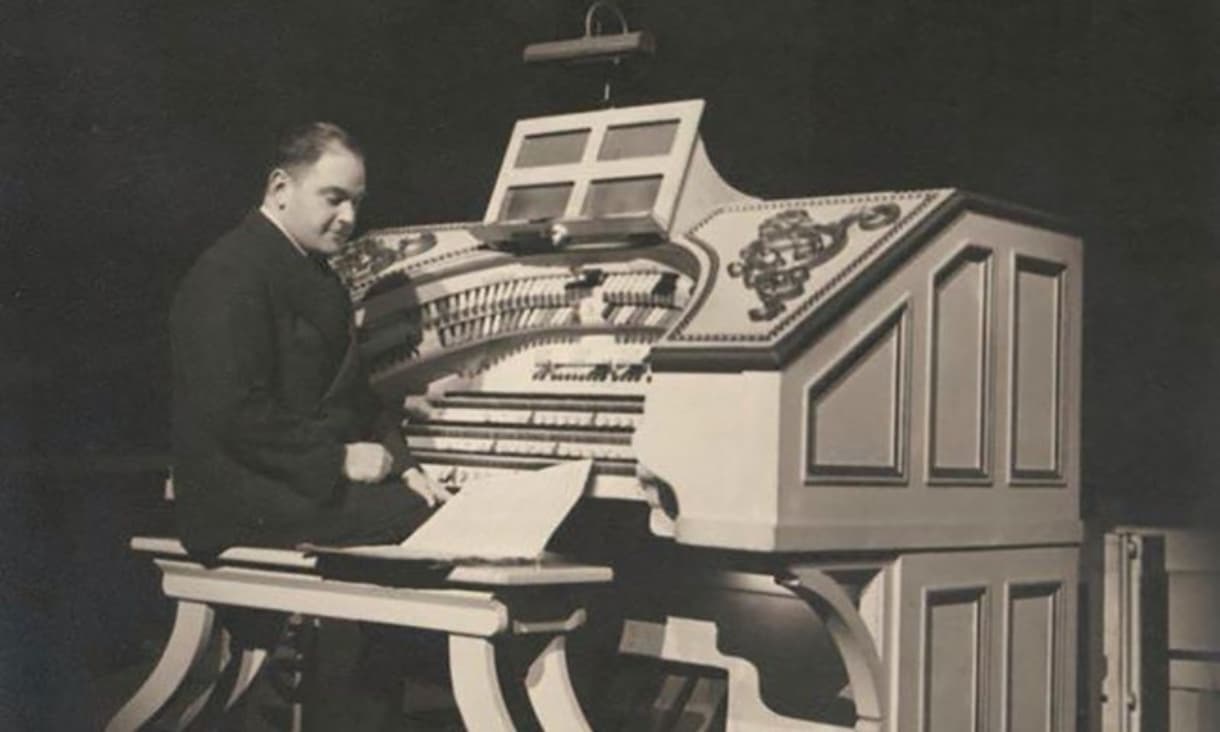The Capitol reclaims its place as a Melbourne cultural icon
Following a multi-million-dollar refurbishment, The Capitol has reopened today as a contemporary destination for culture, education and innovation.

Watch this sizzle reel produced by RMIT which provides a snapshot of the building over its 100 years.
The Capitol was originally built in 1924 by celebrated architects Marion Mahony Griffin and Walter Burley Griffin.
The Chicago-Gothic-style theatre, then known as the Capitol Theatre, is considered their greatest interior design work. The Capitol was the first extravagant “picture palace” to be built in Victoria. It originally seated over 2137 people through sweeping stalls and circles, and today the updated capacity is still a grand 574.
The theatricality of the movie-going experience is made more spectacular by the unique light displays in the crystalline ceiling, often choreographed to play in time with live orchestral scores during the silent film era. Originally lit by incandescent globes in red, yellow, blue and green, today the ceiling displays are controlled by a digital matrix of hundreds of LED bulbs and data points – to the same utterly mesmerising effect.
The Capitol has been through several iterations of upgrades and modifications since 1924. RMIT University purchased the theatre in 1999, running lectures during the day and hiring out to festivals on evenings and weekends. By 2014 it had fallen into critical disrepair, and the University closed the theatre’s doors, readying it for the makeover that you see today.
RMIT worked with architects Six Degrees Architects and Hutchinsons Builders between 2017 - 2019 to restore The Capitol to its former glory and make considerable upgrades to the building. This was made possible thanks to the Victorian Government, who contributed $2.5 million to the refurbishment, as well as private donations including $500,000 from Melbourne filmmaker and RMIT alumnus Ling Ang.

Following a multi-million-dollar refurbishment, The Capitol has reopened today as a contemporary destination for culture, education and innovation.

Theatre organs were like the synthesisers of the 1920s, and now capable of integrating with modern technology, their musical and theatrical potential is limitless.
Whichever actors appeared on the screen in the early days of the Capitol Theatre, one star was always present – Eliza, the theatre’s Wurlitzer organ.
Essentially a 1920s version of a synthesizer, Eliza can replicate a full orchestra and a full range of sound effects. In the silent movie era, she was as integral to the cinema experience as the action on screen. She continued to captivate audiences long after the advent of ‘talkies’, through pre-show entertainment and concerts.
Now, she’s ready to start a new chapter at The Capitol. Reinstalling this magnificent machine would not only preserve an important part of Melbourne’s cultural history, but create new opportunities for today’s students, musicians, filmmakers and audiences.
With your support, we can bring Eliza home and put her back in the spotlight, completing the restoration of The Capitol.

We would love to hear from you for RMIT social media content. Email your story to thecapitol@rmit.edu.au.
Today, The Capitol is a research, innovation and mentoring hub that celebrates the Theatre’s storied past while looking to the future of creative industries.
The theatre provides new work opportunities for students and allows them to collaborate with industry partners and the professional creative community without having to leave campus.
By expanding the theatre’s use beyond film screenings, RMIT has created a ‘new media’ hub in an ‘old media’ setting, fitted out with the latest technology and linked directly to RMIT’s media precinct.
This connectivity delivers innovative learning experiences for RMIT students across digital media, virtual reality (VR), augmented reality (AR), film and animation.
Alongside learning and teaching activities for the RMIT community, RMIT hosts a range of programming for the public alongside partners.
RMIT regularly collaborates with partners including Melbourne International Film Festival, The Wheeler Centre, Social Sciences Week, RISING, Fringe, City of Melbourne’s Now or Never Festival, Birrarangga Film Festival and Black & Bright First Nations Literary Festival to co-create transformative shared experiences for audiences and communities at The Capitol. In 2024 The Capitol was the site of the ASEAN-Australia Summit Artistic Collaboration showcase presented in partnership with the ASEAN-Australia Taskforce.


RMIT University acknowledges the people of the Woi wurrung and Boon wurrung language groups of the eastern Kulin Nation on whose unceded lands we conduct the business of the University. RMIT University respectfully acknowledges their Ancestors and Elders, past and present. RMIT also acknowledges the Traditional Custodians and their Ancestors of the lands and waters across Australia where we conduct our business - Artwork 'Sentient' by Hollie Johnson, Gunaikurnai and Monero Ngarigo.
More information